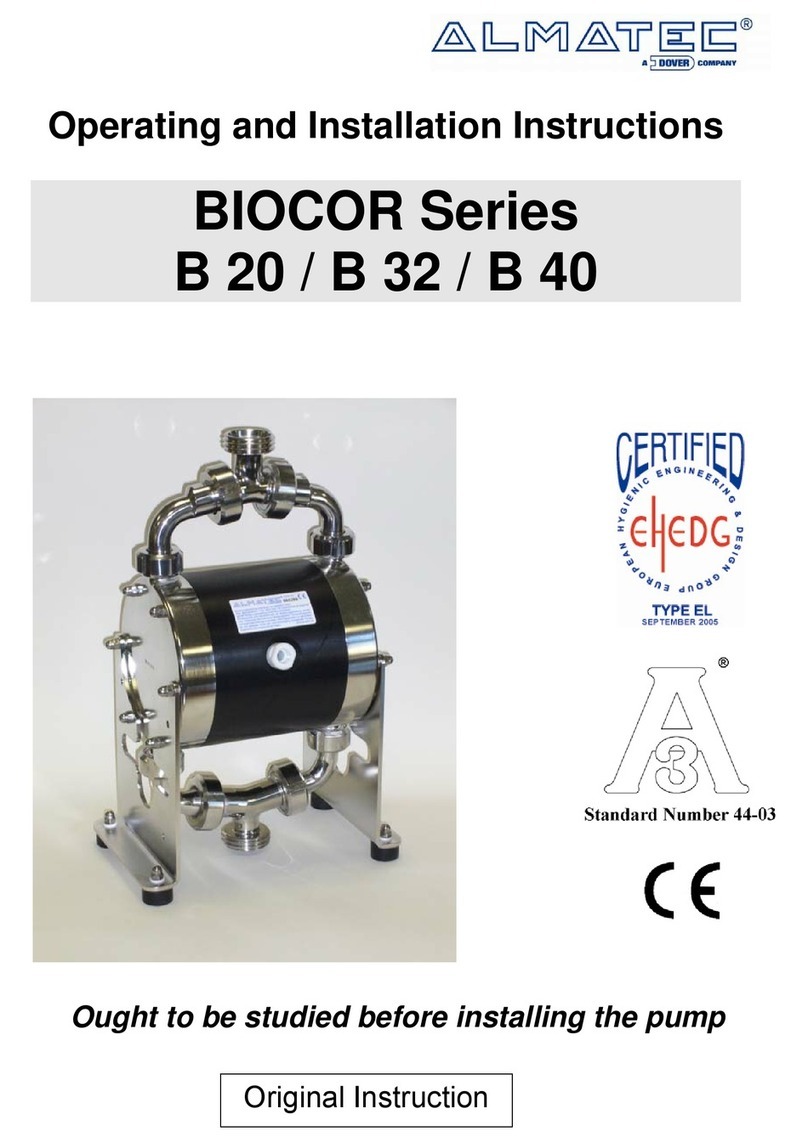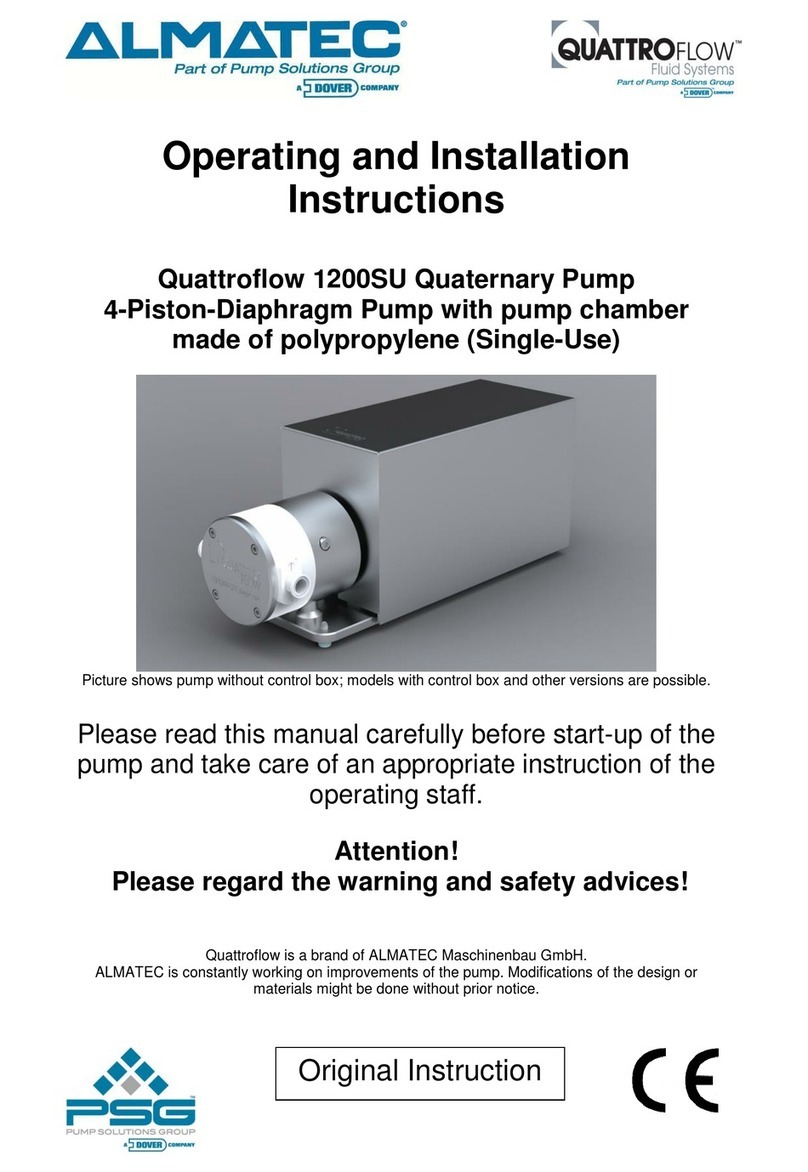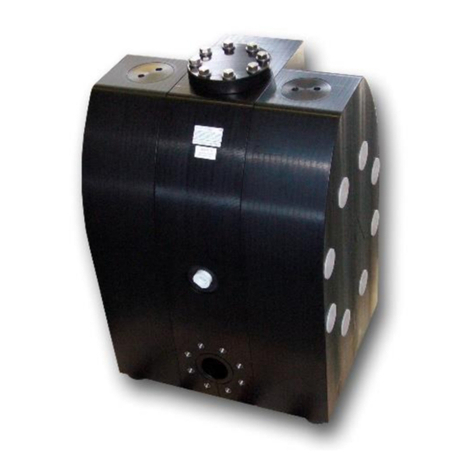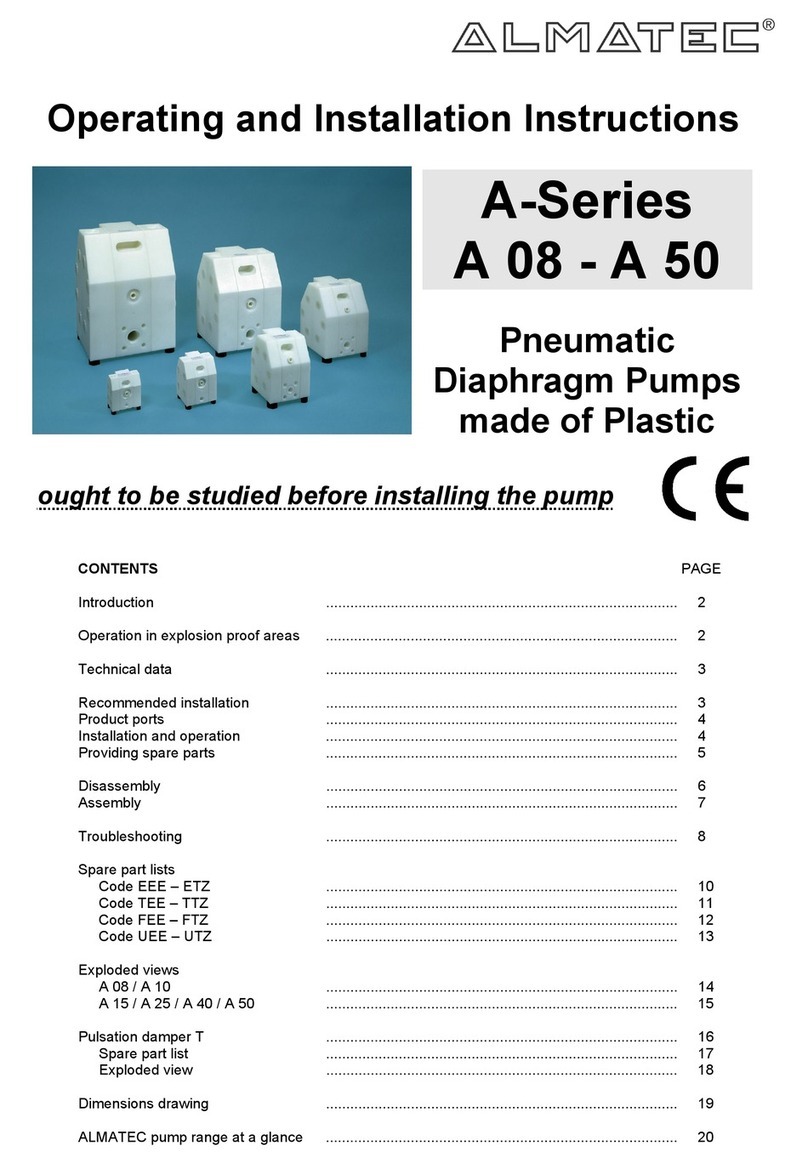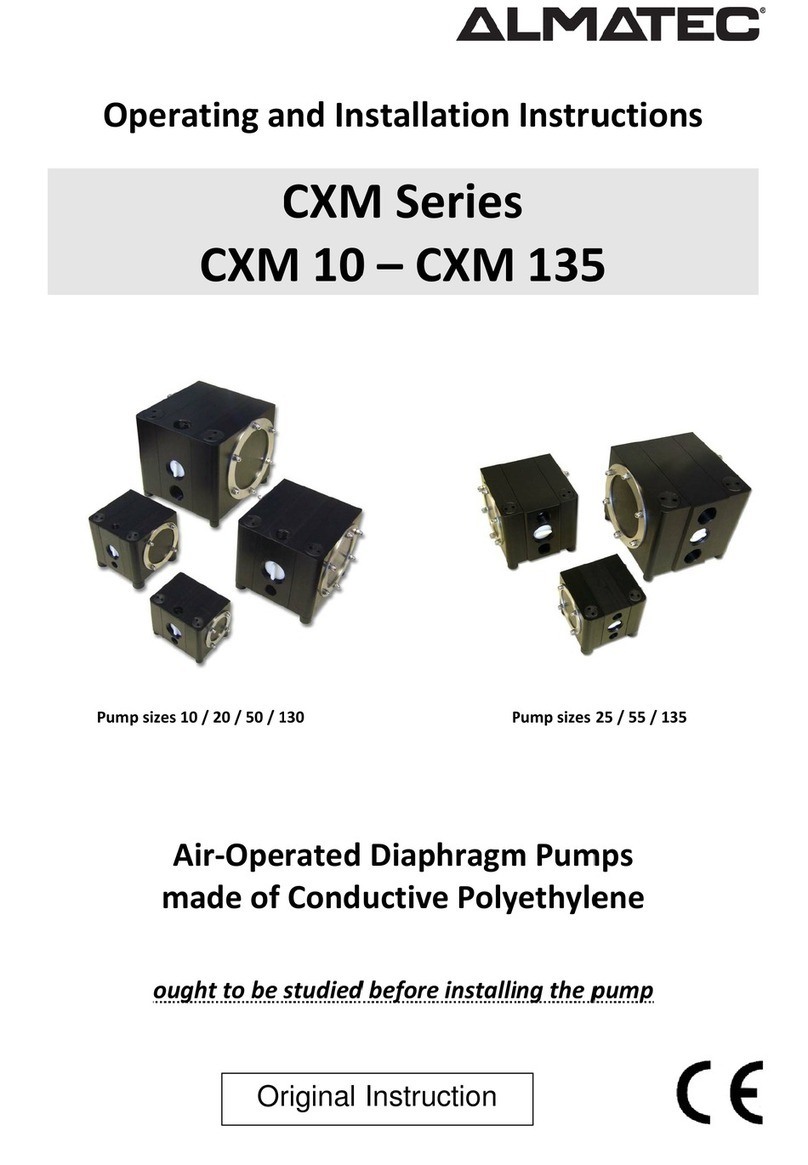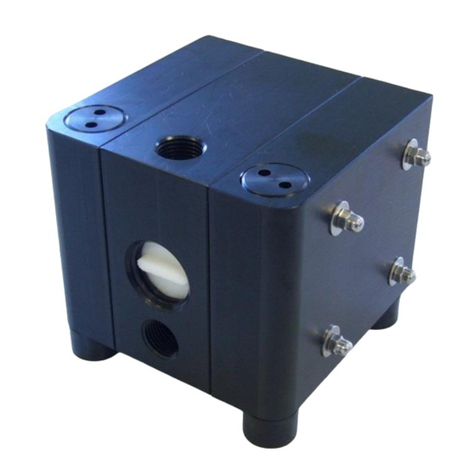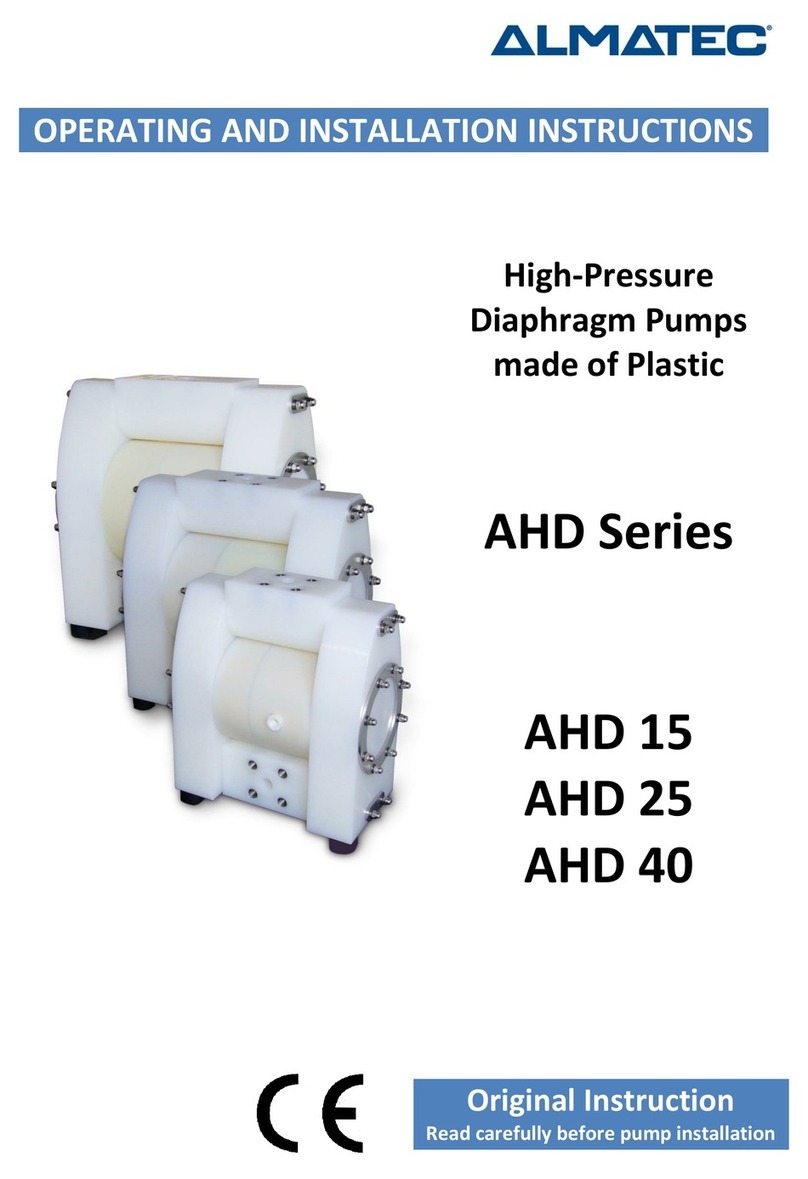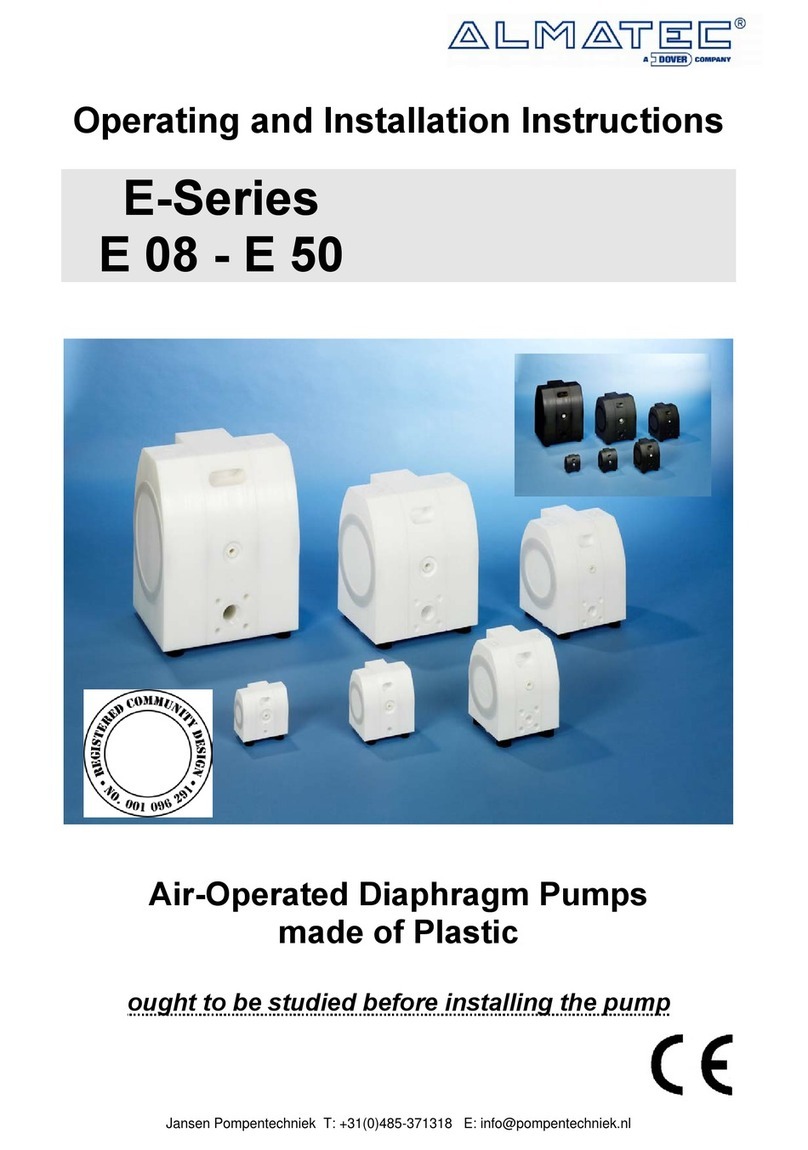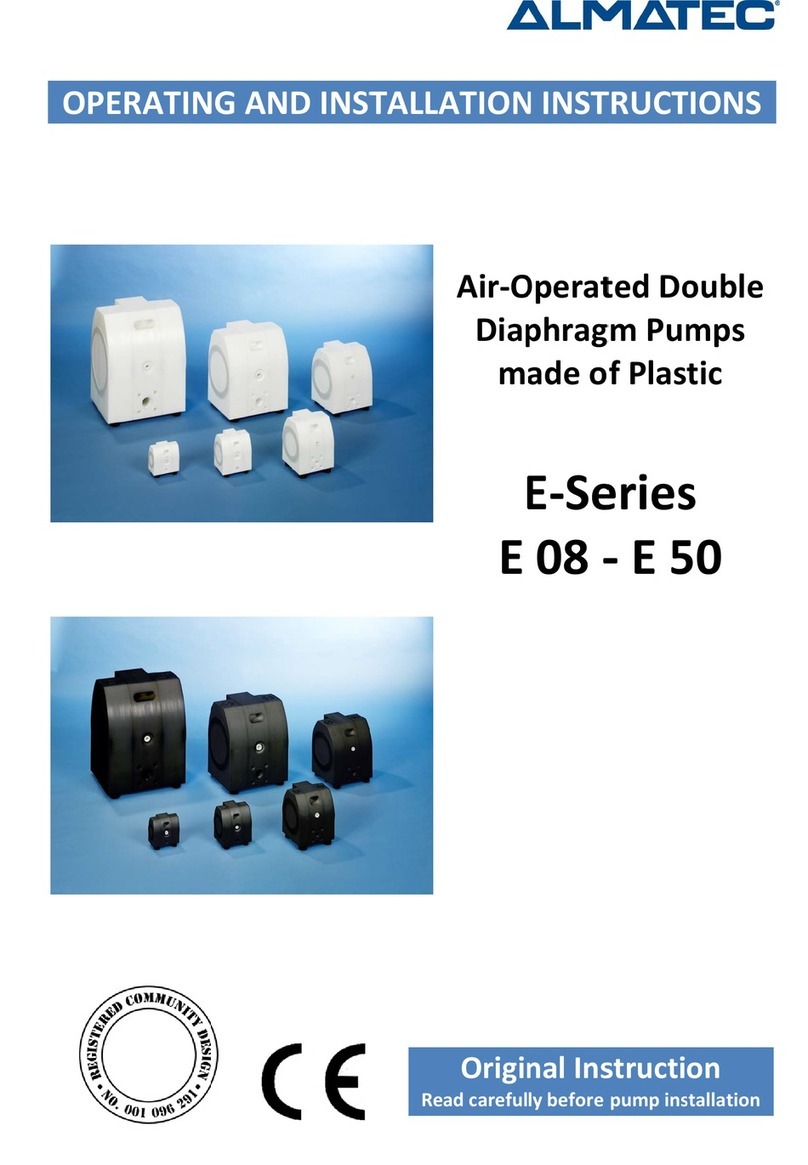
Safety hints
Installation, operation, and maintenance by qualified staff only.
Before start-up respectively after the first hours of operation, the union nuts [22]
must be checked for tightness; if necessary they have to be tightened. This may
also be necessary after longer periods of stoppage, with large variations of
temperature, transport as well as disassembly of the pump.
Before start-up of the pump anyone should acquaint oneself with the explanations
of the chapter troubleshooting (see pages 13/14). Only by this the defect quickly
can be realized and eliminated in case of trouble. Problems which cannot be
solved or with an unknown reason should be passed on to the manufacturer.
Before any maintenance and service procedures arising on the pump or on the
optional equipments, the complete installation has to be turned off and protected
against accidental turn on. This is possible by a lockable emergency stop for the
air supply of the pump. Additional a danger sign against restart should be
attached.
Pressure tests of the plant a pump is included in may only be carried out with the
pump disconnected from the pressure on both ports or by using the pressure the
pump develops while operating. The load of a pressure in the plant may damage
the pump.
Pump must not be operated with a positive suction pressure.
Depending on the conditions of operation, the liquid conveyed might escape from
the pump through the muffler in case of a diaphragm rupture (in this case muffler
has to be replaced). For further safety requirements the optional equipment
diaphragm monitoring is recommended.
In case of a diaphragm rupture, it might be possible for the fluid pumped to intrude
into the air side of the pump. In very adverse conditions - e.g. pressure within the
fluid system during stopped air supply - the fluid might as well find its way into the
air supply lines. To protect other devices like pulsation dampers or even
pneumatic valves, it is recommended to protect the air supply line accordingly,
e.g. via a non-return valve. This would as well avoid polluting the air supply line.
The state of the muffler has to be inspected regularly, as a blocked muffler can be
forced out of the pump. If this happens, damages of properties and/or persons
cannot be excluded.
In case of delivery of hot liquids the wetted pump must not standstill for a longer
time, because it could lead to temporary leaks in the valve area and to a blockade
of the air control system.
The relevant effective security advises have to be respected.
Pools of liquid which appear in the near outer area of the pump have to be
inspected on danger potential, if necessary safety measures are to be taken.
Chemical and biological reactions in the product chamber of the pump (mixture of
different substances) and the freezing of the liquid have to be avoided.
Before starting to disassemble the pump, take care that the pump has been
emptied and rinsed. Both ports piping are to be closed and drained if applicable.
Further the pump has to be cut off from any energy on the air and product side. If
the pump is being deported from the plant, a reference about the delivered liquid
has to be attached.
Procedure for rinsing: rinse the pump with neutral product, then turn around to the
top, afterwards 90° to the side, and finally back to the top. Repeat this rinsing
procedure several times.
Please respect the relevant additional security advices, if the pump has been used
for aggressive, dangerous or toxic liquids (e.g. suitable protective equipment
according to the safety data sheet of the liquid). In case of a diaphragm rupture, it
is possible that residues of the liquid remain behind the diaphragms, in the area of
the air control system and at the muffler, despite of several flushing processes.
Hence, appropriate safety equipment according to the safety data sheet of the
liquid is indispensable.
Before putting the pump back into operation, the tightness of the pump has to be

